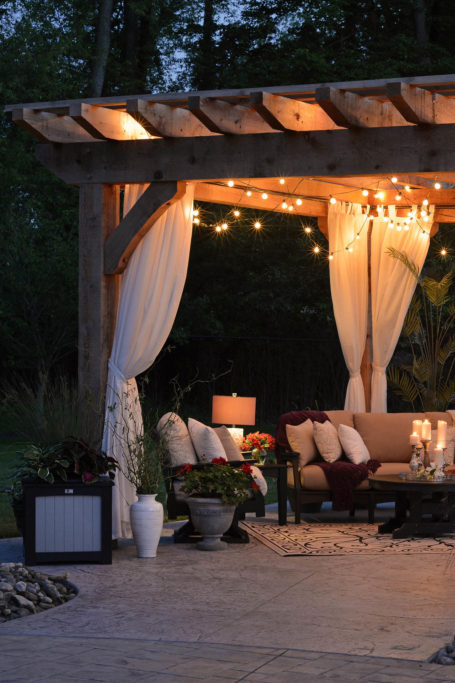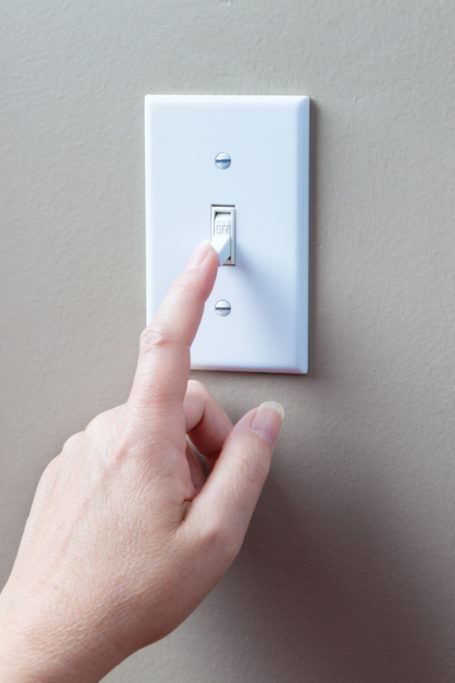Better Bathroom Lighting
Bathroom lighting is not often at the top of interior design priorities, but it is one of the most important design elements in your home. These are the lights that greet you peacefully in the morning and help you wind down at night. Great bathroom lighting can make your bathroom feel larger, help you complete important tasks, and highlight your bathroom’s best features.
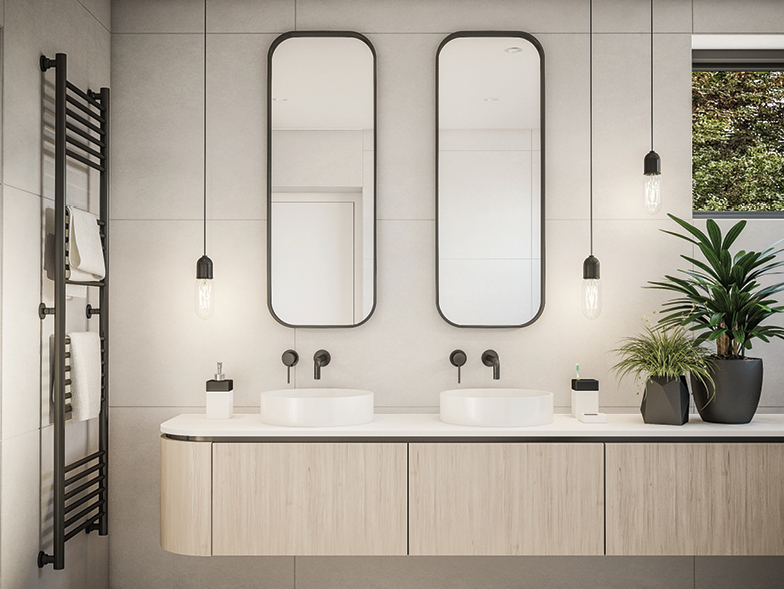
Pick the right light temperature
To have great bathroom lighting, you should understand and adjust to the right color temperature. Every light has a color temperature measured in kelvin (K). The lower the temperature rating, the warmer, or redder, the light appears. The higher the temperature, the cooler, or bluer, the light appears. For example, a candle flame has a temperature of 1,800 K, and daylight during a snowfall is around 6,500 K. Most people find lighting between 2,700 K and 3,000 K comfortable and familiar.
Skin tone
When colors look unnatural, bathroom tasks like applying makeup can be difficult. It’s important to choose light temperatures that complement your skin tone. Some people have warmer pink undertones in their skin while others have cooler olive undertones, for example. Buying an LED light with changeable color for your vanity can help you balance the light and create the perfect setting for you.
Color complementing
In addition to balancing your skin tone, it’s beneficial to choose a light temperature that complements your bathroom’s color scheme. When in doubt, consider warmer light to make your space feel cozy instead of cold.
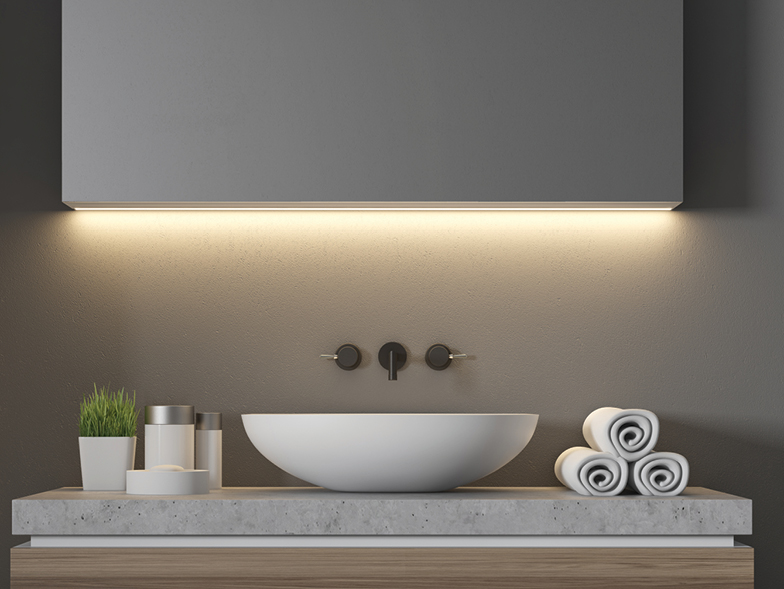
Diffuse and dim
If you’ve ever woken up in the middle of the night or early in the morning to go to the bathroom, you know the feeling of disorientation that can happen from abruptly turning on the light. The trick to creating a better environment for your mornings and evenings is to utilize diffusion and dimness.
Diffusers
No one likes feeling as if there’s a spotlight on them in the bathroom; spotlights can look and feel uncomfortable in this space. Harsh and direct lighting can cast shadows on your face that distort how you really look. To solve this, invest in semiopaque diffusers that can evenly distribute the light. If you have recessed lighting, you can purchase special covers to achieve the same effect. Vanity and ceiling lights are the most important ones to diffuse.
Dimmers
Programmable lights have grown in popularity, but you also can go the traditional route of purchasing a light switch with a dimmer. Both options offer the ability for you to adjust the bathroom light depending on how bright you want it. You can set mood lighting for a bubble bath, a dim night light for quick bathroom trips, or a bright light for tasks like shaving.
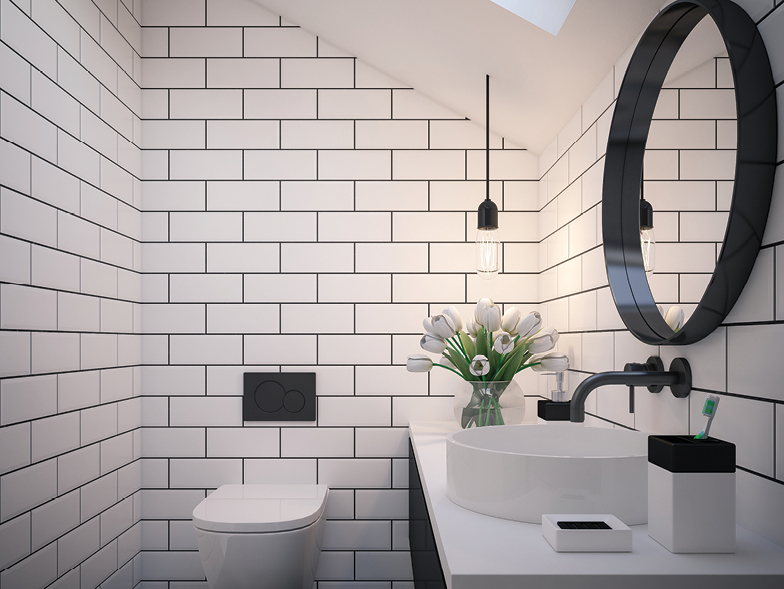
Place them strategically
Even if you have the right lighting color, diffusers, and dimmers, you still need to place your bathroom lights in the best locations to reap their full benefits. Pro tip: start from the ceiling, and work your way down.
Central light
A flush-mount ceiling light can transform the darkest bathroom into a bright oasis. Place an overhead light in the center of the bathroom for general illumination, and make sure it’s equipped with a diffuser.
Shower/tub
Adding recessed lighting above a shower or tub can provide safety and a spa-like ambience. Plus, you’ll have a much easier time cleaning your shower. Just be sure to use wet-location lighting that can withstand direct moisture.
Vanity/task lights
Resist the urge to overlight your vanity. To avoid overlighting, make sure the lights are balanced. For example, mount one light on each side of the mirror or three lights spaced evenly above the mirror. Placing lights both next to and above the mirror can create glare and uneven lighting and waste energy.




